Museo del Design del Friuli Venezia Giulia – Associazione di Promozione Sociale
P. IVA e CF 02863400301 – info@mudefri.it
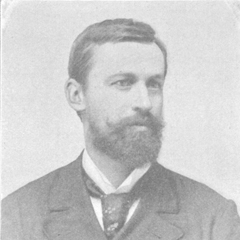
Max Fabiani was one of the greatest architects and urbanists of all Central Europe. In addition to that, he was also a talented designer, writer and inventor.
Born in 1865 in Cobidil, a small town near San Daniele del Carso, he was the son of a wealthy landowner and a Triestine aristocrat. He studied architecture at the Polytechnic of Vienna, where he also worked for Otto Wagner and took part in the Secession. The assassination of Archduke Franz Ferdinand of Austria in Sarajevo directly influenced his life by interrupting his job as the heir’s private consultant for architectural and art history matters. After the Battle of Caporetto and the Austro-Hungarian conquest of Gorizia, Fabiani was appointed as supervisor for the reconstruction of the Region, a job he maintained after the end of the hostilities. Subsequently, he later became an Italian citizen, declining his position as University professor in Vienna. He later returned to San Daniele del Carso, where he served as the mayor (podestà) under the Fascist regime. He died at 97 years old in Gorizia. It was 1962.
Fabiani was one of the geniuses who understood the evolution of European architectural thinking and perfected it first through his eclectic style, which he introduced in many of his works for the Habsburg Empire, and later through his essential rationalism.
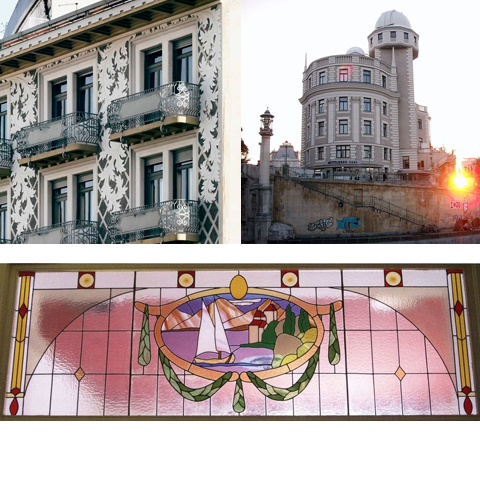
I would like to feel like a “barley seed” in its full growth potential. What does it mean, you ask me? Well, we tremble like leaves from a tree and we tremble more as a soft breeze comes and goes. What do Men want? What kind of happiness are we all pursuing? What is our ultimate goal? Unlimited options of evolution are finally available. The clearer this vision becomes, the better we can organize our existence. (Max Fabiani)
He designed various buildings in Vienna, such as Palazzo Artaria, Urania, Portois & Fix, in Gorizia. In Trieste, he designed Casa Bartoli, Palazzo Stabile, the Language School in via Filzi, formerly known as the Hotel Balkan, and the Narodni dom. He designed various others buildings in Opatija, Bielsko-Biala (Poland), Bled, Liberec (Bohemia), Bolzano, Aquileia, Montreux, and Salzburg. After Ljubljana’s earthquake of 1895, Fabiani designed some of the most important reconstruction works in the city, such as the ones of Casa Krisper and Casa Kleinmaier.
Pictured on the left are Palazzo Urania in Vienna, Casa Bartoli in Trieste and a glass window designed for an interior in the building.
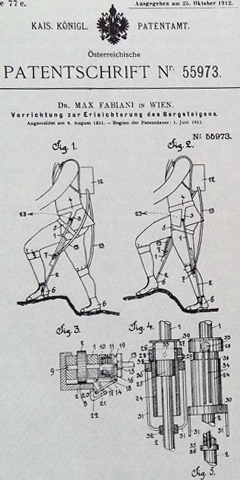
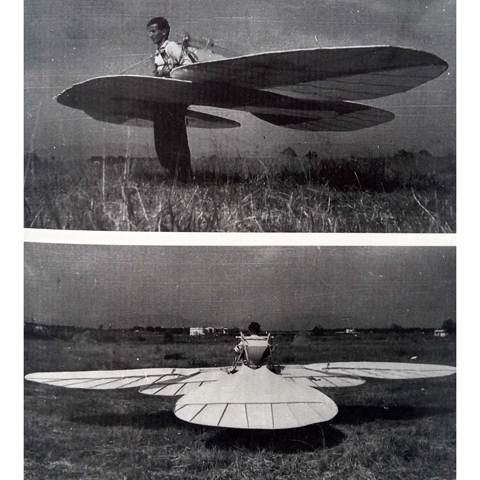
Max Fabiani was most probably the designer of many products of the Società Anonima Antonio Volpe between the Thirties and the Forties.
Below is the Rocking chair n. 269, produced by the Società Antonio Volpe, circa 1920.
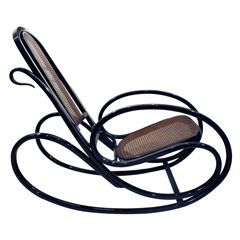
Studies and concepts that lead to the Egg Rocking Chair 267 design are rooted into the history of Max Fabiani’s patents.
In 1911, Max Fabiani’s first project was patented: it was a machine for walking uphill. In 1914, Fabiani designed an airplane with wings similar to those of birds. In the Fifties, he invented a waterway to connect the Danube to the Adriatic Sea.
(Pictures from "Max Fabiani, Nuove Frontiere dell'Architettura", Marco Pozzetto, Cataloghi Marsilio, 1988, pag.182 e pag.185)